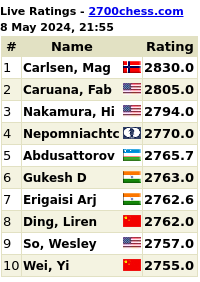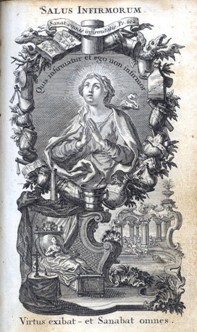I have been alerted that in the recent issue of England’s The Catholic Times there is a profoundly deficient article by a Msgr. Loftus with all sorts of dopey comments on Summorum Pontificum.
If one of you kind readers would provide me with the text, I will post my observations about it.
Perhaps you might chime in here, so as to help other readers avoid unnecessary work.


































Although the entire article was too long for me to post, I can say that at one point, Mgr. Loftus claims that Summorum Pontificum is restricted to individuals already attached to the EF, and it is not intended that it be used as an excuse to “convert” (his word) people.
Fr. Michael Clifton
http://michaelclifton.blogspot.com/
may be able to help; he has 3 recent posts on Msgr Basil “Lofty” in the Catholic Times.
Mgr Loftus is the lefty stooge of ‘The Catholic Times’, and no one takes him seriously.
Ever article is so absurd that many wonder if he’s put up to it by the radical right.
Nevertheless, I know several priests who have cancelled their subscriptions ‘The Catholic Times’ because of him.
Folks: What I need is the text of the article. I am sure Msgr. Loftus is a fine gentleman, no matter how strange his ideas.
Text.. not ad hominem comments, please.
Father, as requested, the full text of Mgr Loftus’ article – very long!
The Pastoral Approach to Provision of the Old Mass rite – by Mgr. Basil Loftus
No-one was more pastorally sensitive to the need for Tridentine-rite Mass provision than Pope Paul VI. The greatest obstacle to the grant of this concession was the attitude of Archbishop Lefebvre and his followers in various countries. In a letter to the Cardinal Secretary of State on June 29 1973 Father Bugnini, the Secretary of the Commission for Divine Worship, spelt out the difficulties; “ Opposition to the ‘new’ Mass has given rise top a bitterly disputatious campaign of attachs on the Pope and the Church, on the Council and on ecclesiastical institutions. It has opposed the Mass of Pius V to that of Paul VI, calling the one the expression of true faith, the other heretical. Once the problem is located on this doctrinal level, any yielding would be harmful to faith and discipline. On the other hand, when special cases arise in which the moving force is not polemical and doctrinal, a concession can be granted to celebrate the old Mass.”
Fr. Bugnini refers to the request for Tridentine-rite Mass provision after the promulgation of the new rite, in these terms: “Their request could even be seen as quite legitimate when seen as a psychological and spiritual need of faithful who were accustomed to the kind of celebration they had known and loved since childhood and who were ill at ease with the new rite. But the petitions made had a serious drawback: they criticised the Missal of Paul VI as heretical and Protestant and claimed that the Mass of Pius V was the only authentic Mass.” (The Reform of the Liturgy, 1948 – 1975, p. 284)
On the feast of SS Peter and Paul in 1970 a pilgrimage to Rome by those who were petitioning for the retention of the Tridentine-rite left the following letter with the Holy See: “We know that the infallible and irreformable teaching of the Council of Trent of the Holy Sacrifice of the Mass has been betrayed by the new rites – by the imposition of the vernacular, by the fraudulent watering-down of the consecration of the chalice, and by the translation into the vernacular which has destroyed the Catholic doctrine of justification as defined by the Council of Trent. The Mass is no longer the bloodless renewal of the Sacrifice of Calvary, but an assembly; the hierarchical and sacred priesthood has been eliminated and been replaced by a president of the assembly…we know that the entire liturgical reform amounts to a real disavowal of transubstantiation and the real presence of Christ in the Eucharist.”
No Pope, however deep his sympathies with the spiritual and pastoral needs of those who sought concessions on the Tridentine-rite within the context of the liturgical reform, could ever allow them when his action could be seen to be a capitulation to those who accused him of heresy. Yves Congar fingered the precise point when, in his book ‘Challenge to the Church – the Case of Archbishop Lefebvre’, he cited the traditionalists’ concern as not being liturgical renewal but the renewed image of the Church which came out of Vatican II.
This regrettable tendency to exaggerate and offensive language were not limited to issues, but descended into personal abuse, particularly of pope Paul VI, and Fr. Bugnini. On November 30, 1969, a number of fountains in the centre of Rome had chemicals poured into them to stain the water red, allowing the Lefebvrists to claim, “The waters of Rome ran red just as the waters of Egypt were transformed into blood” – a reference to Exodus 7:19.
The situation was not dissimilar from that which existed at the Council of Trent. At that time, 400 years before Vatican II, there was considerable sympathy for the introduction of the vernacular into the Mass. The only reason it was not done was because the more extreme of the Protestant reformers claimed that the Mass was invalid in Latin – something the Council of Trent could not afford to seem to admit. After Vatican II, because of the exaggerated claims that the new liturgy was heretical, Pope Paul VI could not allow himself to be seen as admitting that in any way by making concessions about the re-statement of the Tridentine-rite Mass. Yet, despite the abuse and insults, and the undoubtedly stressful times, both Paul VI and Fr. Bugnini not only continued but redoubled their efforts to make provision for those whose pastoral needs could only be met through the Tridentine Mass.
There were special concerns about a number of countries, especially Britain – invariably referred to in Vatican documents as “England”. Even when trying to understand the difference between “England”, “Britain” and “the United Kingdom” the highest officials in the Vatican could run into difficulty. A then British Minister to the Holy See once asked me what briefing had been given to the Pope which caused him to greet the diplomat with the works: “Ah, I know you have not come from England”. Confusion reigned, as the Minister rather thought he had! But it was “England” and other countries with a Protestant tradition which elicited special understanding.
Bugnini (p. 280) is quite clear: “The point needs to be made that in the United States and especially in England, and more generally in countries with a strong Protestant majority, the introduction of the vernacular into the liturgy meant to many the loss of one distinction between Catholics and Protestants and of a of their attachment to Rome in the face or Protestantism. For these people, the psychological effects of the reform were quite serious. For some, the reform meant the collapse of a world and the practical acceptance of views until then regarded as heretical.”
Another deep worry for Paul VI was the position of priests who had grown old, who could not face the change, and for whom the Mass each day meant everything.
So, the problems were clear – what was the solution to be?
First of all, clear re-statement of the facts; “When…Pius V published the first edition of the Roman Missal he presented it to the people both as an instrument of liturgical unity and as a witness to the truth and devotion of the new Church’s worship…we now express a similar hope that this book (the new rite of the Mass) will be received by the faithful as an aid whereby all can witness to each other and strengthen the faith common to all, since it enables one and the same prayer, expressed in so many different language, to ascend to the heavenly Father.” (Paul VI, Apostolic Constitution Missale Romanum, April 3 1969)
Then, provision for good and loyal priests, who had served the Church faithfully all their lives, and needed the Tridentine-rite for the rest of their lives – on September 18 1975, with a single initial “P”, Paul VI approved the suggestion that individual bishops should be allowed to authorise such priests to celebrate Mass privately in the Tridentine-rite. For the rest, a firm line – bishops could not authorise the public celebration of the Tridentine-rite Mass. But of course the holy See could, and did, provided there was no danger of such public celebrations being seen as an admission that the new liturgy was in any way defective. The extent and the depth of Paul VI’s determination to meet genuine pastoral needs is seen at its best in his reaction to the petition from Cardinal Heenan, the Archbishop of Westminster, for a concession to be made for groups of converts and for elderly people – not privately, but publicly. Fr. Bugnini (pp 297 – 298) prints out the handwritten note he received from the Pope, who forwarded the cardinal’s request to him: “The Congregation must have already drawn up instructions for such cases… In any event, I think…that a favourable answer…should be given to the first request, and to the second as well…my thanks, prayers and blessings, October 30, 1971.”
As the more extreme and vitriolic outbursts of the Lefebvrist-inspired traditionalist movement began to run out of steam, and in a certain sense to become cocooned in an eccentric cultural attachment to birettas and exaggerated clerical dress which isolated it from everyday, common-sense Catholics, it became possible for the Holy See to enlarge its concessions for the public celebration of Tridentine-rite Masses for groups of people who accepted the legitimacy of the new rite.
The latest pronouncement – Summorum Pontificum – by the present Pope, also has a restriction. The concession is for already (continenter) existing groups of Tridentine-rite Mass devotees. It is not an invitation to seek converts to the cause. The clear obligation on all bishops and priests is to work tirelessly for the acceptance of the new rite, laid down by Vatican II remains.
“England”, as the Vatican will always see us, had been exemplary in its interpretation of the Pope’s pastoral concern for those who need the Tridentine-rite Mass for their spiritual health, rather than for those who want it in order to bolster their campaign of opposition to Vatican II in general, and its liturgical reforms in particular. This proud legacy must not be squandered.
Is it the article from the issue of 14 September you wanted? I can post it to you – do I send it to your London hosts or to the States?
It’s pretty appalling! (It isn’t the same article as the one quoted above.)